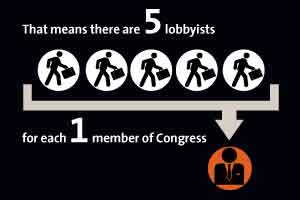
Photo: Wikimedia Commons
During a stop on the campaign trail in 2008, Sen. Barack Obama told an audience in Lebanon, Virginia, “You can’t tell me we can’t figure out how to burn coal that we mine right here in the United States of America, and make it work.” Within months, an industry lobby group turned that speech into a rousing television ad for clean coal: “We can. We will. Join us.” The federal government accepted the invitation—in May, Energy Secretary Steven Chu allocated $2.4 billion in stimulus funds to “help position the United States to lead the world” in reducing coal’s greenhouse gas footprint.
From that resounding endorsement, it would seem that “clean coal,” an umbrella term for methods used to reduce coal pollution, is an easy fix for the world’s climate change woes. Proponents are particularly enthusiastic about a technology called carbon capture and sequestration (CCS), which would collect and store underground the carbon dioxide produced by the nation’s most abundant fossil energy source. Scientists envision capturing CO2 emissions and then trucking or piping the gas to a storage site with suitable geology. Once compressed, the gas would be injected thousands of feet underground, usually into a layer of porous rock. Over hundreds to thousands of years the CO2 would then turn into limestone or other minerals. Various studies suggest that there is space for between 2 and 10 trillion tons of carbon dioxide in geologic formations worldwide. California alone could store 1,800 to 6,600 years’ worth of emissions from its current power plants.
There’s been some debate over CCS’s downsides, chiefly cost: The Bush administration canceled a project for the nation’s first commercial-scale CCS project in early 2008 because of its estimated $1.8 billion price tag, though the FutureGen plant is now slated to be revived with stimulus funding. Even so, a fully functional CCS system—complete with plant, gas transportation system, and underground storage site—is decades away.
But perhaps the biggest obstacle is finding communities that are willing to live above all that CO2. Just ask the West Coast Regional Carbon Sequestration Partnership (WESTCARB), a consortium of government agencies and energy companies funded by the DOE to study sequestration. It’s investigated launching a pilot geologic-sequestration project in Northern California’s Sacramento Valley since 2003, only to be repeatedly thwarted by permitting and liability issues and private landowners.
WESTCARB has been reluctant to discuss its drawn-out search for a site, although one failed attempt, in the town of Thornton, has received significant scrutiny. About 40 minutes south of Sacramento, Thornton is a community of fewer than 2,000 with a one-room library, a 200-student K-8 school, and an annual Our Lady of Fatima celebration that includes bullfighting, per the tradition of the local Portuguese community. The town’s grocery store, with a cement floor, sells everything from mops to masa flour.
When WESTCARB began negotiations with a Thornton property owner in 2006, it tried to keep things quiet, but word got out, and residents became concerned. “Right at first, you go, ‘Oh my gosh, I don’t want that in my backyard,'” says Marlene Corbitt, secretary of Thornton’s Chamber of Commerce. A special town meeting, held in the elementary school, was organized, and the WESTCARB scientists explained their proposal: to build the storage facility at a site five minutes from town for two weeks, then monitor the structure for two years. The 4,000 tons of CO2 would remain underground for good. The townspeople, recalls Thornton’s fire chief and de facto mayor, Vince Tafuri, were unconvinced. “Even though they said there was no potential danger, I don’t think the community believed that 100 percent.”
In fact, environmentalists and scientists are still debating the pros and cons of CCS. Sequestered CO2 can interfere with mineral extraction and cause small earthquakes; leaks can harm plants and animals and, in concentrations of greater than 7 percent in the air, suffocate people. The likelihood of these problems’ occurring is “extremely low to negligible,” according to Stanford University earth sciences professor Sally Benson, a lead author on the Intergovernmental Panel on Climate Change‘s 2005 special report on carbon dioxide capture and storage. But Barbara Freese, an advocate with the Union of Concerned Scientists, says compressed CO2 could contaminate groundwater if not monitored carefully. “It’s tricky to know what conduits exist underground,” she says. “Those could be a potential pathway for the CO2 or the other minerals to leach out.”
Residents in Thornton worried about their safety and the pollution from construction. Some also wondered what was in it for them: The project’s roughly $7 million budget didn’t include community compensation, though a WESTCARB scientist told them that there might be economic benefits for local people were it to reach commercial scale. Still, Corbitt ultimately concluded the project was safe, and might even make money for Thornton, with other countries coming or state government people coming out to take a look.”
During the next two years, WESTCARB negotiated with the landowners on and around the land where it wanted to drill a test well. But the property owners eventually declined to participate. WESTCARB moved on to another spot, but this second group of property owners and underground-rights holders wanted indemnity from all long-term liability. The consortium refused, since insurance policies for CCS projects weren’t available—the first one hit the market early this year. (In the future, most experts expect government to assume long-term responsibility for commercial-scale sites, but currently no such law exists.) Eventually, with the liability question unresolved, the Thornton project collapsed.
Thornton offers a preview of the turmoil ahead as CCS experiments grow. A Harvard study found that 11 of 19 DOE test sites surveyed (there are 25 projects nationwide) reported significant legal obstacles. A 2008 Congressional Research Service report concluded, “Although the general public is still largely unfamiliar with CCS, there are early indications that community acceptance may prove a significant challenge.”
Indeed, WESTCARB has been trying for years to set up test sites in Solano County, a large agricultural region 60 miles northeast of San Francisco that’s home to more than 400,000 people. Solano County’s principal planner, Jim Leland, says he’s received phone calls from WESTCARB about every six months, but nothing has come of it yet.
In August, WESTCARB, which has now enlisted the help of Shell Oil in its search for a test site, approached farmers in Birds Landing, an unincorporated community of 130 in Solano County. WESTCARB contacted Janith Norman, a city council member in nearby Rio Vista, to discuss the project. But Norman remains skeptical. “I told them, ‘You are telling me about how this might benefit WESTCARB, but you aren’t telling me anything about how this might harm anyone living in the area.'”













